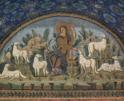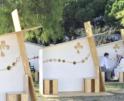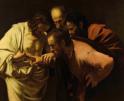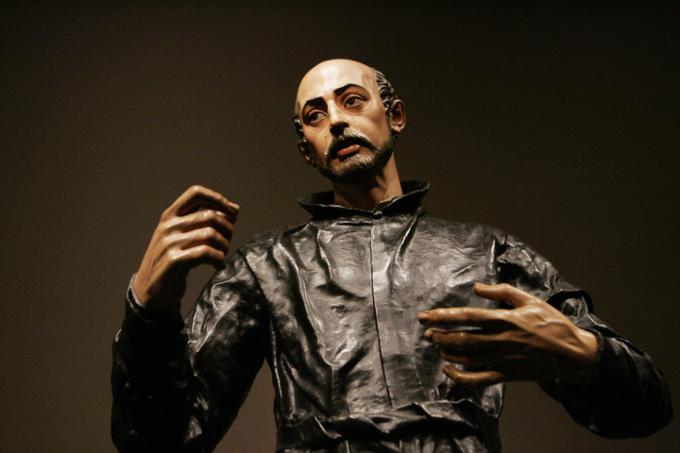
Faith
. . . Pope Francis urges us to look toward the "holiness found in our next-door neighbors, those who, living in our midst, reflect God's presence" and constitute, so to speak, "the middle class of holiness."
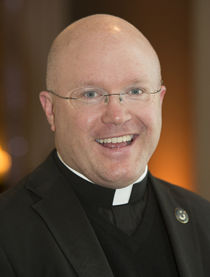
Landry
The most memorable Christmas present I've received was not from Santa during my infancy or sneakers, sports equipment or gadgets from my folks during my adolescence. It was the four-volume "Butler's Lives of the Saints" my parents got me for Christmas when I was a college freshman that I read nightly for about five years and still have with me at my bedside. Reading the inspiring stories of the great heroes and heroines of the faith each night helped me to discover more clearly my vocation not just to the priesthood but to Christian holiness, to purify and recalibrate my ambitions and to commit to the means to achieve them.
When people approach me asking for recommendations for good spiritual reading, I often suggest titles to help them grow in prayer and in the integration of their relationship with God into daily life. I always encourage them, however, "every other book," to read the life of a saint, because hagiography is easier to read -- and irresistibly attracts and inspires us toward greater contemplation, unity of life and generosity.
The most famous example of the impact reading the lives of the saints can have occurred 500 years ago this year. A 30-year-old Basque soldier had his right leg shattered and left calf torn off by a cannonball during the May 20, 1521, Battle of Pamplona. Spiritually, however, the projectile was shot straight from Damascus. Iñigo López de Oñaz y Loyola's stoutheartedness on the battlefield was magnified when his leg needed to be reset multiple times and a large protruding bone spur needed to be sawed off, to which he consented without anesthesia or complaint.
To pass the time in what would turn out to be a nine-month convalescence at his family's castle, the only option for him -- centuries before modern media -- was reading. He tried without avail to get his hands on the epic tales of chivalry and romance common to the epoch. The only volumes to be found were a life of Christ and a book on the lives of the saints. In desperation he began to read them -- and not only were his heart and the direction of his life changed, but also the history of the Church and the world.
López was pierced by his own shallowness compared to the saints' substance and roused by the courage of the martyrs in fighting the good fight on the battlefield that mattered most. In contrast to his vain pursuit of earthly honors, their seeking and seizing the most lasting and valuable treasure captivated him.
After reading about Francis of Assisi and Dominic of Guzman, two 13th-century mendicants who extravagantly gave up so much of what the world treasured in order to obtain a much more valuable fortune, and who formed religious families to help the whole world rediscover true riches, he asked one of the most important questions in history: "These men were of the same frame as I. Why, then, should I not do what they have done?"
Led by their example and many graces, the one we now know as St. Ignatius of Loyola made the commitment to serve the true King and to sacrifice everything to extend his kingdom. His transformation was arduous. Once he had recovered enough to journey, he traveled to Montserrat, where he laid down his sword before the famous statue of Our Lady, exchanged his expensive clothes for sackcloth, spent 11 months praying in a cave in Manresa, and journeyed to the Holy Land where he intended to defend the holy places and the true faith, before the Franciscan superior sent him home lest because of his zealous provocations he be killed.
To be of use to God, he discerned he needed an education. With extraordinary humility, he went literally to grammar school in order to learn Latin with young boys, before heading to the Universities of Alcala, Salamanca, and Paris. There, his roommates were the future Sts. Francis Xavier and Peter Favre and God through him set in motion the plan for the founding of the Jesuits.
As we mark the quinquecentenary of his conversion, seeing and celebrating what God accomplished in his life, it's important for us to raise the same question God inspired him to ask after reading the lives of the founders of the Orders of Friars Minor and of Preachers. Ignatius, after all, is of the same frame as we, with virtues, vices, and 46 chromosomes. Without the help of cannonballs and orthopedic surgeons, why can't we do, why shouldn't we do, what he has done?
This summons to saintly imitation obviously does not mean that God is calling us to be Jesuits or found worldwide religious orders, any more than the light God gave Ignatius did not mean he was asking him to replicate all Sts. Francis' and Dominic's choices and deeds. But God is indeed calling us to respond to the grace of conversion and holiness just like the intrepid Basque did a half millennium ago.
Pope Francis recently reiterated that summons in his 2018 apostolic exhortation on the call to holiness in today's world, "Gaudete et Exsultate."
"A Christian," he wrote, "cannot think of his or her [life] on earth without seeing it as a path of holiness, for 'this is the will of God, your sanctification' (1 Thess 4:3). Each saint is a mission, planned by the Father to reflect and embody, at a specific moment in history, a certain aspect of the Gospel" (19).
The Holy Father cautions us against the temptation "to think that holiness is only for those who can withdraw from ordinary affairs" (14) or, as St. John Paul II once said, "as if it involved some kind of extraordinary existence, possible only for a few 'uncommon heroes' of holiness" ("Novo Millennio Ineunte," 31). Rather, Pope Francis urges us to look toward the "holiness found in our next-door neighbors, those who, living in our midst, reflect God's presence" and constitute, so to speak, "the middle class of holiness" (7).
Holiness, he underlines, is found not just among the formally canonized saints and martyrs, but often in fellow parishioners, hardworking moms and dads, godparents and grandparents, permanent deacons and their wives, and so many others who live the little things of each day with heroic faith and love.
On May 20 the Jesuits began an "Ignatian Year" dedicated to the 500th Anniversary of his conversion and the 400th anniversary of his canonization next March 12. It will conclude on his feast day next July 31. As we, however, celebrate a week from Saturday his birth into eternal life, we can take advantage of this extended year of grace to ponder his life and try to imitate in our life what's imitable in his.
We can, first, imitate his prioritization of prayer as well as some of its content. His time in the cave of Manresa led to his spiritual classic, "The Spiritual Exercises," a guide for meditation, for discernment, and for retreats. His own prayers have formed countless souls. In his renowned "Suscipe," for example, we learn how to treasure God more than his gifts: "Take, Lord, and receive all my liberty, my memory, my understanding and my entire will, all I have and call my own. You have given all to me. To you, Lord, I return it. Everything is yours; do with it what you will. Give me only your love and your grace. That is enough for me."
Second, we learn from him how conversion is not so much turning away from sin and vanity but turning toward and with God. Above the place in the Loyola Castle, where his "metanoia" happened through reading the lives of the saints, it says, not "Here, he converted," but rather, "Here he gave himself to God."
Third, we can emulate his courage and zeal to share the faith, something that contagiously led his spiritual sons to found so many educational institutions and to become missionaries, like the North American Martyrs close to home.
Fourth, we can imitate the great warmth of his friendship, one example of which were the more than 7,000 letters he wrote, especially to the Jesuits who even soon after the founding of the Society of Jesus headed toward the ends of the then-known earth.
Finally, we can model our lives on his love for Christ and for Christ's vicar on earth, which led him and the Jesuits to make a fourth vow -- beyond poverty, chastity and obedience -- of special obedience to the pope in regard to the missions. Ignatius lived through some of the most notorious papacies in Church history, the ugliness of which helped trigger the Protestant Reformation, but he, with special trust in Christ and the Holy Spirit, promised special submission not just to the Successor of Peter but of those popes. That's a model not just for his Jesuit sons but for every Catholic in every age.
In each of these five ways, there is the opportunity to imitate the generosity of Ignatius' response to God, a holy dedication for which he incessantly himself prayed in words that we can make our own:
"Lord, teach me to be generous. Teach me to serve you as you deserve; to give and not to count the cost, to fight and not to heed the wounds, to toil and not to seek for rest, to labor and not to ask for reward, save that of knowing that I do your will."
- Father Roger J. Landry is a priest of the Diocese of Fall River, Massachusetts, who works for the Holy See's Permanent Observer Mission to the United Nations.
Recent articles in the Faith & Family section
-
Scripture Reflection for April 21, 2024, Fourth Sunday of EasterJem Sullivan
-
The new Temple: How Easter changes religionDr. R. Jared Staudt
-
The wonder of Ordinary TimeLucia A. Silecchia
-
Is there still responsibility for past sins after confession?Jenna Marie Cooper
-
Wounds, not scarsJaymie Stuart Wolfe

